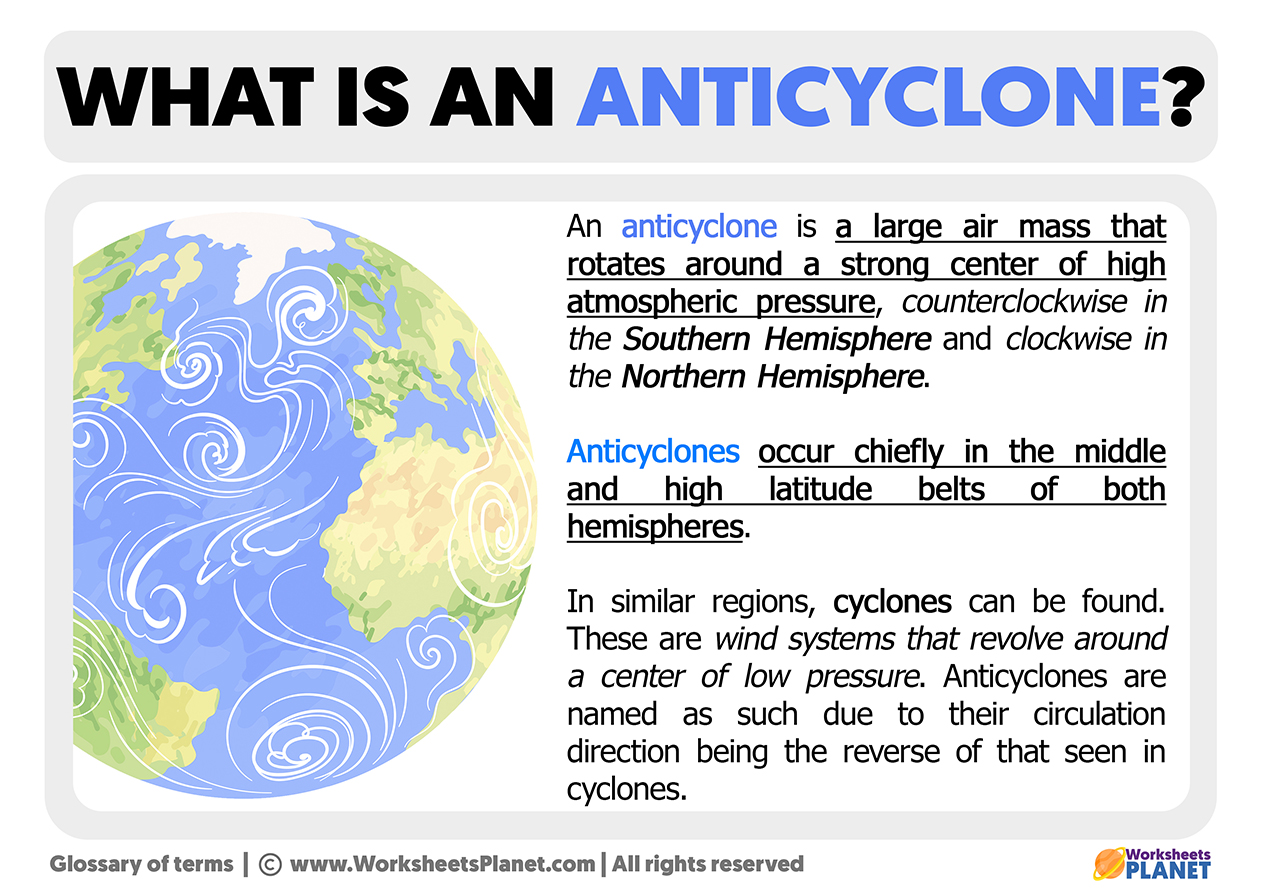An anticyclone is a system of high atmospheric pressure characterized by cold and dry air. In other words, it is an area of the atmosphere where air is descending, which causes pressure to be higher in comparison to the surrounding areas.
Anticyclones often cause clear skies and colder temperatures than normal for the time of year in which they occur. Although they can be beneficial for agriculture and navigation, they can also generate adverse situations, such as prolonged droughts and dense fogs.

It is important to note that anticyclones are not exclusive to a particular region, but occur in different parts of the world and move over time. Therefore, it is necessary to monitor and study their patterns to predict their possible effects on climate and meteorology.
Characteristics of an Anticyclone
Understanding the characteristics of an anticyclone is important for predicting its potential impact on weather and climate:
- Cold and dry air: Anticyclones are areas of descending air that are typically cold and dry.
- Clear skies: Anticyclones are associated with clear skies and sunshine, due to the lack of rising air that would typically cause cloud formation.
- High pressure: Anticyclones are areas of high pressure, which means that the atmospheric pressure is greater than the surrounding areas.
- Slow-moving: Anticyclones can be slow-moving, which can result in prolonged periods of weather with little change.
- Low wind speeds: Due to the high-pressure system, anticyclones are typically associated with light winds.
- Temperature inversions: Anticyclones can also result in temperature inversions, where warmer air is trapped above colder air, resulting in a layer of smog or fog.

